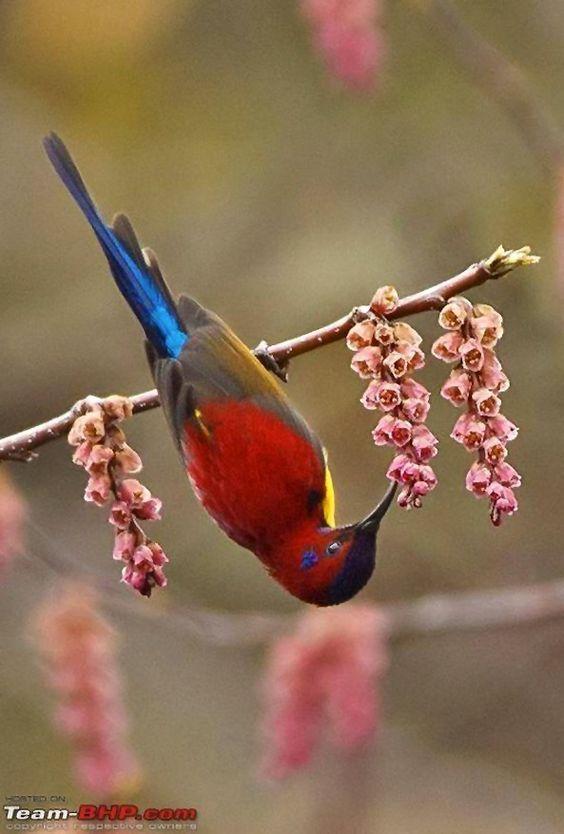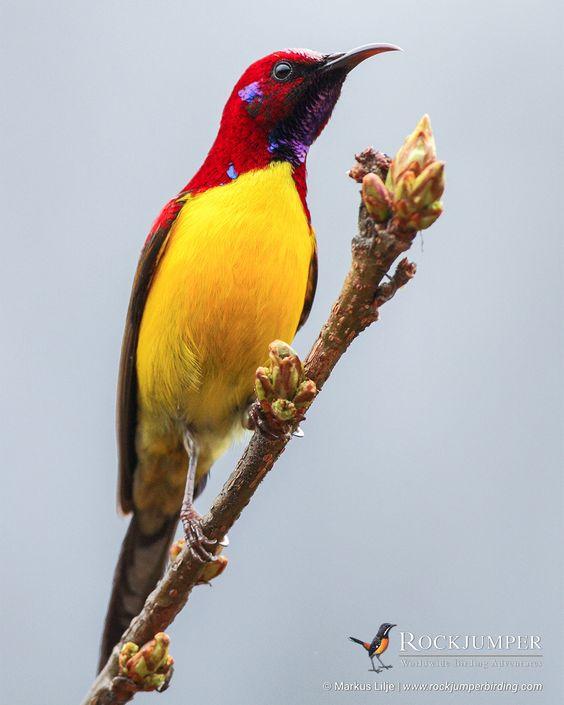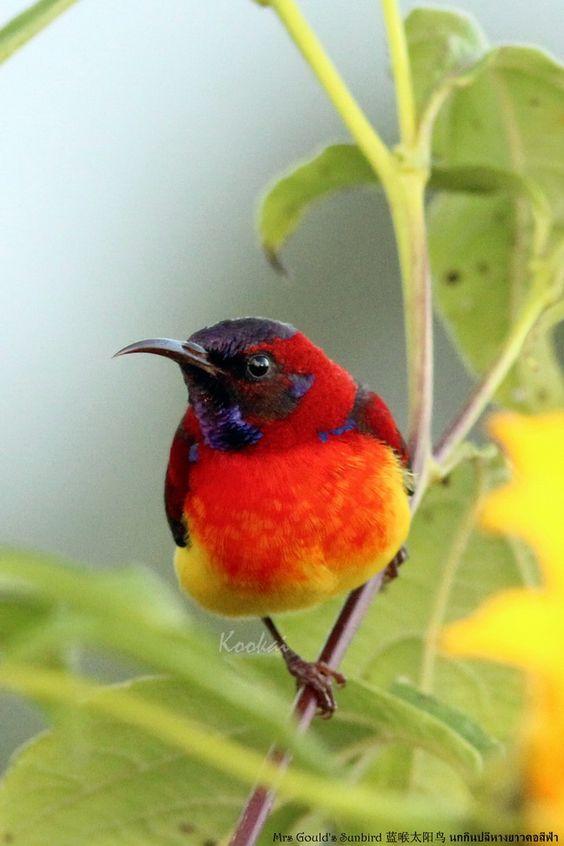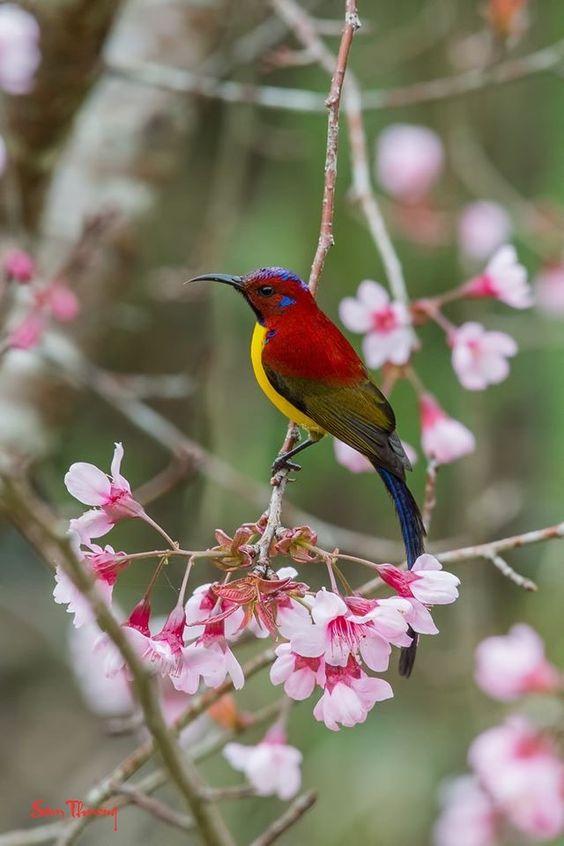The male of this species is a bright scarlet color with a blue tail and yellow underparts, resembling a precious jewel. Meanwhile, the female has less vibrant colors with olive upperparts, yellow underparts, and a grayish head. It’s worth noting that the female has a pale rump, which is easiest to see when hovering. These birds actively forage, often gathering in flowering trees. They’re typically found in hill and mountain forests as well as forest edges, with breeding occurring at altitudes up to 4250 meters. Their calls include a high-pitched “tzeeee” and a sharp “tzit.”
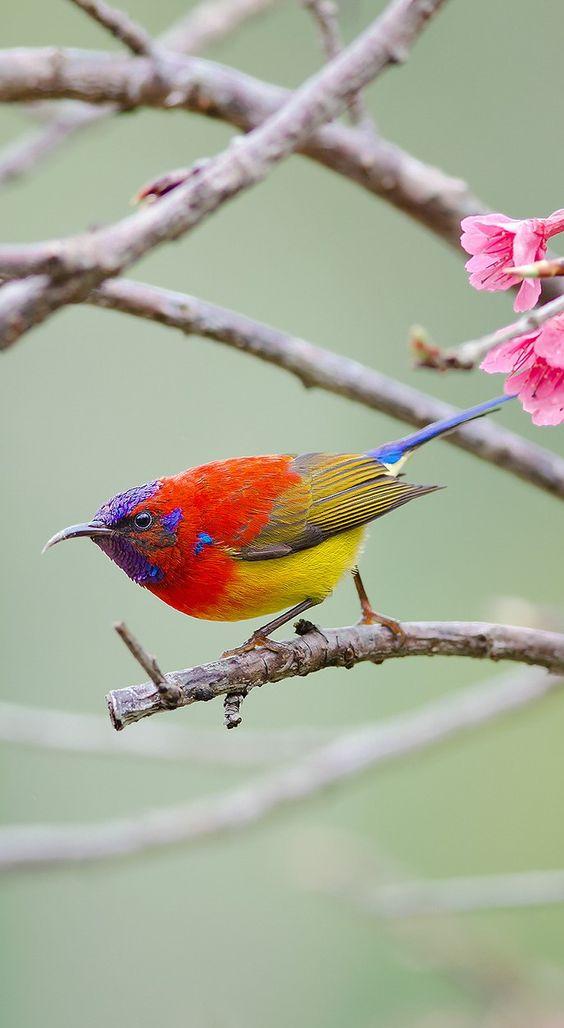
The Southeast Asian region is home to a delightful and vibrant bird known as Gould’s Sunbird. With its stunning appearance, this small creature steals the hearts of those who witness it. Its plumage boasts vivid red underparts, green upperparts, and a head that shimmers blue-purple. It is truly a sight to behold. Notably, the male Gould’s Sunbird possesses tail feathers longer than their female counterparts.
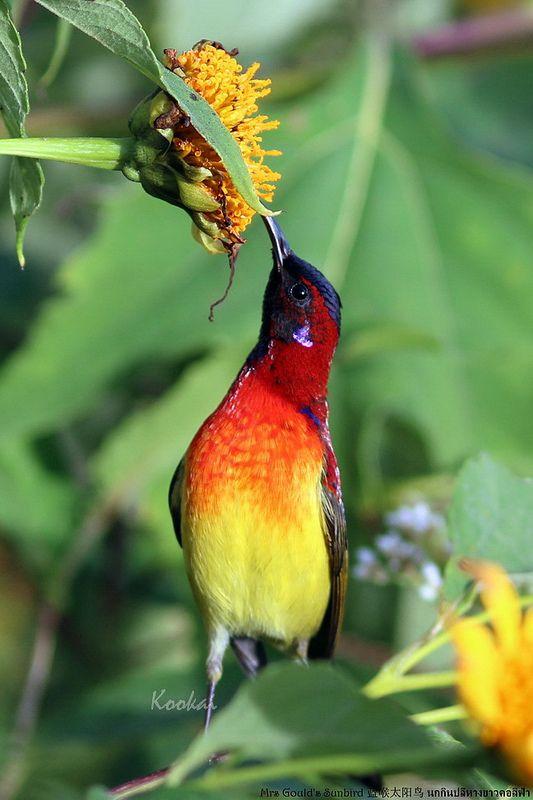
These creatures feed on nectar and are important for the pollination of flowers and plants in their natural surroundings. They are commonly found in forested regions but can also be observed in gardens and other areas where blooming plants are present.
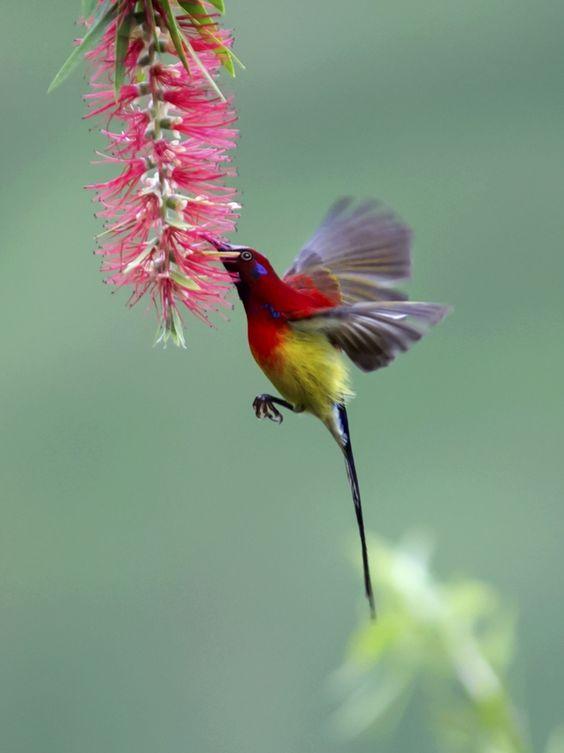
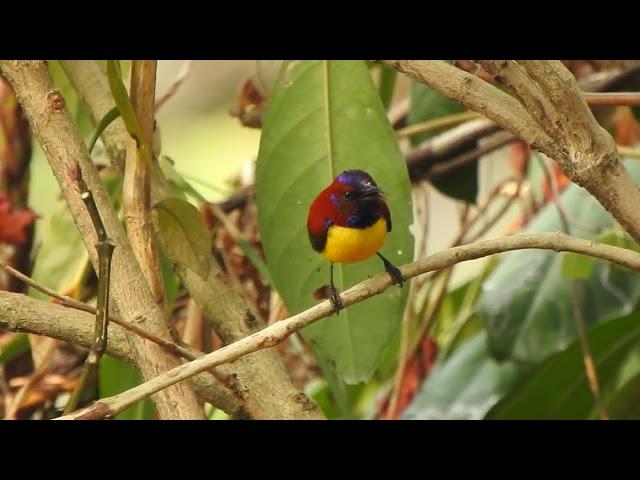

Although not a common sighting, the Gould’s Sunbird is a spectacular display of nature’s beauty for bird enthusiasts who have the opportunity to spot them. These birds exemplify the amazing diversity and vibrancy found in the aviary world and serve as a reminder of the crucial role that protecting natural habitats plays in preserving such wonders.
